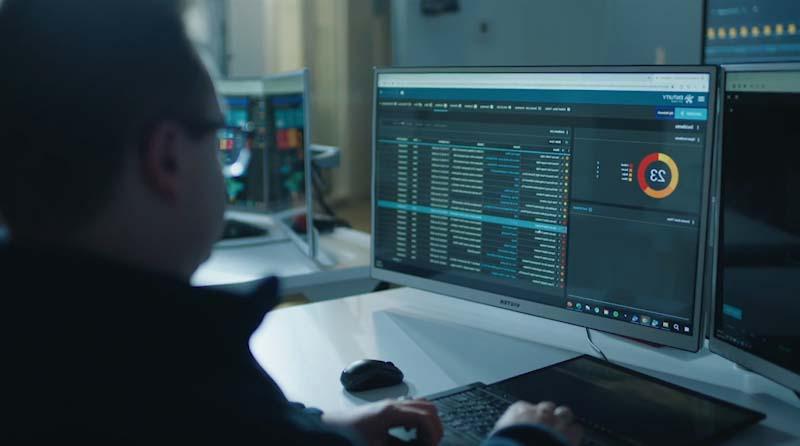Data Center Cost Reduction Methods – Ask the Engineer [VIDEO]
Ask the Engineer
Jack Kauter and Park Place Technologies Solutions Architect , Rob Roberts, discuss the question – “What Are the Best Data Center Cost Reduction Methods?” in this month’s Ask the Engineer.
You can learn more about IT cost reduction strategies here.
4 Data Center Cost Reduction Tips
Jack: Hi, guys. Jack here, and it’s time for another episode of Ask the Engineer. Joining me today is Solutions Architect at Park Place Technologies, Rob Roberts. Rob, how are you doing today?
Rob: Great Jack. How about yourself?
Jack: Very well, thank you. Rob, many of our clients are looking to save money in the data center to invest elsewhere, despite budgets being flat. Do you have any advice on how IT professionals can free up funds in their data center?
Read More: Data Center Cost Reduction: 6 “Fast Action” Ways
Hardware-focused strategies can help data center operators trim the budget
Research data center cost-cutting and you’ll be blown away by the innovation. Many hyperscale providers are breaking ground in areas like liquid cooling, alternative energy integration, and the use of artificial intelligence for data center infrastructure management (DCIM) to eke out new levels of efficiency.
This is all very hopeful for the future of affordable, sustainable data centers and offers interesting things to consider when planning new construction. But most Indian data center operators have existing facilities in which they need to save money today, without major retrofitting.
6 Ways to Save Data Center Costs
Fortunately, there are turnkey options to make that happen. We’ve compiled six ideas that best combine ease and effectiveness.
1. Improve Efficiency Modularly
A full HVAC transition to liquid cooling and other major capital projects are often out of reach, but energy efficiency can be gradually enhanced through hardware acquisition by:
- Incorporating efficiency gains within lifecycle planning. Determine when increased efficiency of newer hardware justifies the capital expenditure of upgrading data center hardware components.
- Setting energy efficiency targets. Be sure to review energy use statistics for idle and active state, as many products aren’t equally efficient at both ends of the spectrum.
- Evaluating innovative products, such as those with server- or rack-level liquid cooling to take advantage of advances impractical to incorporate at facility-wide scale.
2. Review Your Data Storage
The IoT-driven explosion in data volumes is just beginning. At the same time, the easy capacity gains in HDDs and flash storage is reaching an end. Yet most enterprises aren’t following IT infrastructure lifecycle management best practices. It’s time to reexamine what data the organization is keeping, for what reason, and for how long. “Purge whenever possible” is good policy—and it saves money on storage.
When rarely accessed data must be kept, for archival or regulatory purposes, consider cold storage, such as tape systems, to reduce the energy overhead associated with your storage infrastructure management. Optimizing your storage overhead is a key strategy for reducing data center costs.
3. Focus on Support Value
With nearly any new hardware purchase, companies will usually add a support contract from the original equipment manufacturer (OEM). It’s a fine plan to help ensure deployment success and access any microcode with new features. But a Gartner study found that four years after product release is the latest point at which this approach makes financial sense. For organizations that purchased a system a year or two into the IT hardware lifecycle, that may mean only two or three years into its service life.
Past this timeframe, new features are almost never offered and many OEMs will increase the cost of support. So customers pay more but get less value. On the other hand, third party hardware maintenance providers can step in to offer better, more responsive support and more features at about half the cost. And with multivendor hardware maintenance through a single provider, contract management and trouble ticket oversight become more efficient as well.
4. Extend Hardware Lifespan, Wisely
For some time, there were two opposing camps on upgrades. There were the conservative-minded who kept hardware only as long as the initial support period lasted, generally three to five years. And there were the risk-takers preferring to “run it till it drops,” racking up the savings with DIY support until catastrophic hardware failure cost them more in downtime than they’d gained.
Now there is a middle way with post-warranty and post-EOSL (end of support life) maintenance available on nearly all server, storage, and networking hardware from major manufacturers. This empowers enterprises to decide on a product-by-product basis which equipment is delivering value. Once all assets, their warranty status, and risk profiles are identified, enterprises can then extract maximum return on these investments, without compromising reliability or security, and stretch CapEx farther.
5. Get Out of Reactive Mode
Few of us make our wisest financial decisions under pressure, and constant support fire drills in the data center can lead to overspending. More staff must be on hand to avoid meltdown when the worst happens again, and the most expeditious option—maybe replacing a malfunctioning piece of hardware without a real diagnosis—is not always the most cost-efficient.
Moving from this stance toward a more proactive one can change the budget equation. For example, newer hardware monitoring systems can streamline triage and automate trouble ticketing to reduce the support burden on data center staff. This provides direct savings and fosters an environment in which resources can be directed more mindfully.
6. Share and Share Alike
Data centers are complex places, and many operators strive to have an in-house team member trained for every possible task. This can lead to unnecessarily high staffing costs.
Tapping outsourcing partners can access to expertise on an as-needed basis, without paying full- or even part-time salaries. It’s worth asking what data center monitoring, maintenance, and optimization tasks can be handed off to outside experts or even computers. With the rise of machine learning-based systems, for instance, you may not need the same number of administrators sifting the daily influx of network alerts as you did just a year ago.
It is vital to stay on top of innovations in data center architecture, systems, and practices, but many ICT executives will find the highest impact, lowest risk data center cost-saving opportunities reside in the more tried-and-true areas of hardware selection, monitoring, support, and optimization. These choices might not be as headline-grabbing as siting data centers under the sea or building the DCIM equivalent of HAL from 2001: A Space Odyssey, but they certainly are closer to home.
1. Avoid Upgrade/Refresh FOMO
Rob: Yeah, I do. The first way to maximize would be to not give in to FOMO (fear of missing out). The gear that you have, that you’ve already bought, if it’s working fine and you’re not running out of resources – don’t upgrade or refresh your gear. Enterprise-grade gear is usually built to last, and will do so for years past even the end of life dates. Just because you’re told you’re not on the latest and greatest, you’re probably not really missing out.
2. Perform Regular IT Hardware Maintenance
A second way, it’s going to be mundane like checking the batteries in your smoke detector, even though it’s boring, doing regular service on hardware can save you thousands of dollars in lost revenue. Especially if critical systems stop working because you’re just ignoring the really small, “soft” errors – I always like to say, “whine now, but don’t cry later.”
3. Keep Track of Renewal Dates
The third is keeping track of and keeping on your renewal dates. It’s a costly mistake and can be a real headache when you realize the auditor is coming to the building, and even if it’s not for compliance reasons, a lot of OEMs or software companies charge you, not only a reinstatement fee, but they’ll even charge you late fees for while you were still using the service when you didn’t have an active contract. That can really add up.
See our EOSL library, and learn about EOL and EOSL dates today.
Jack: Yeah, absolutely. Those are three top tips to be more economical. They’re all coming from different perspectives as well. Do you happen to have any other suggestions on how IT professionals can save money in the data center?
4. Consider Preowned IT Gear
Rob: Yeah, the last tip I would say is, just like with a new car will lose value as soon as you take it off the lot, IT gear is a lot like that. It depreciates in value as time goes by. Older gear never really gets faster, but there’s so much inherent value with buying preowned or even just one generation prior data center gear. It’s just as useful, and it’s honestly instant value.
Jack: Yeah, absolutely. Rob, I think I counted four tips in total there. Great stuff, thank you for sharing lots of information on a topic that’s relevant for a lot of people out there.
That’s all for now guys; if you’d like to suggest a question to one of our engineers, please feel free to reach out to us. For now, we’ll see you next time on Ask the Engineer.



